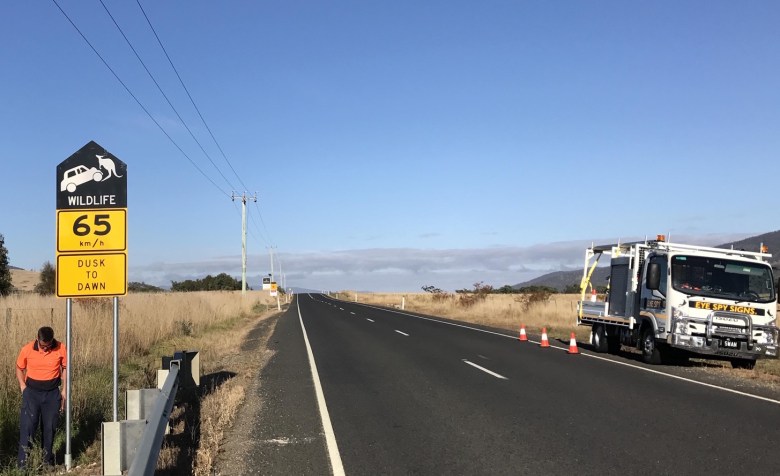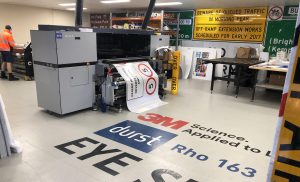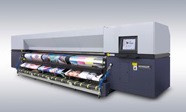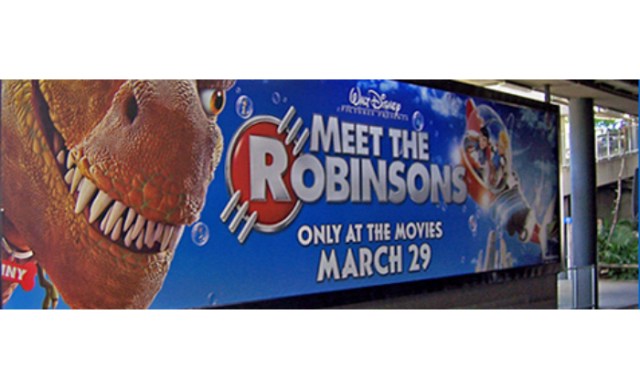
Traffic sign printer Eye Spy Signs has seen an increase in turnover following the installation of a Durst Rho 163TS in March 2017.
The company has been printing road signs in Tasmania with the Durst printer and in doing so has decreased labour levels while increasing turnover.
“Year on year, our turnover has increased whilst our labour levels have decreased [since the install],” Eye Spy Signs managing director John Howard said.
“Running costs are surprisingly low and the reliability of the machine is nothing short of incredible – we have experienced machine availability exceeding 99 per cent since it was commissioned. When needed, support from Durst has been outstanding and the fact that we are in different hemispheres/time zones has made little difference.
“The acquisition of the machine is the best business decision that Eye Spy has ever made. It was not cheap, but what do you expect to pay if you are buying the best in the world?”

Eye Spy Signs started out in a suburban home garage in Hobart, Tasmania back in 1994, initially eked out an existence as a dedicated real estate sign provider. In 1996, it bought the Tasmanian government’s Main Roads sign workshop at tender and became heavily involved in road sign manufacture in the state.
For the next 20 years, its road signs were made using conventional methods – screen printing or cut vinyl – both high in labour content and inherently inefficient, according to Howard.
In the meantime, the development of digital printing processes, and in particular ink technology (in conjunction with 3M), was progressing at a quick pace which Eye Spy Signs took an interest in.
In March 2017, it took delivery of the Durst Rho 163TS.
“All of a sudden, another world opened up. It quickly re-affirmed our position as industry leader. As well as conventional roll-to-roll printing, it offered many side benefits including the ability to print flat substrates,” Howard said.
“For example, we very frequently print jobs direct to corflute requiring no over laminate. These days we put many different types of substrates through the machine – it is so versatile.”
Durst Oceania managing director Matt Ashman said the Durst Rho 163TS was specifically designed for road signage.
“It’s a design that we have been working on for a few years and it’s reached its pinnacle in production speed and quality. It enables sign producers to create digitally printed traffic signs that conform to all of Australia’s state and national legislations – they were previously produced in an analog way,” he said.
“As a smaller company, this was a huge investment for Eye Spy Signs. It meant that they could also produce new designs of road signage that incorporates real imagery.”
Ashman added that the solution has enabled Eye Spy Signs to produce their products quicker and more efficiently, thus more profitably.
“It also removes a very labour-intensive process and replaces it with a far more digital process.”
Comment below to have your say on this story.
If you have a news story or tip-off, get in touch at editorial@sprinter.com.au.
Sign up to the Sprinter newsletter


